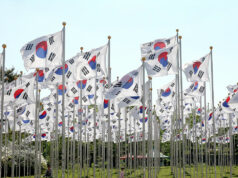Philippines ranks last in COVID-19 recovery performance index

THE PHILIPPINES was ranked in last place in a global index that measured the recovery of 121 countries from the coronavirus pandemic.
The Philippines was ranked in the 121st spot by the Nikkei Asia COVID-19 Recovery Index, which assessed the infection management, vaccine rollout, and social mobility of economies, scoring them on a scale of zero to 90.
The Nikkei Asia report estimated that only 30% of the Philippine population was fully vaccinated as of Sept. 30. This is “low among ASEAN countries,” it said.
Nikkei Asia also noted that while the Philippines has enforced granular lockdowns in the capital region, minors and seniors are still required to stay home.
“The country is gradually easing restrictions on businesses to revive the economy, allowing gyms to reopen and increasing restaurant dining and salon capacities for vaccinated individuals,” the report said.
Within Southeast Asia, Indonesia was 54th, Singapore 70th, Cambodia 76th, Malaysia 102nd, Myanmar 105th, Thailand 109th, Vietnam 118th, and Laos 120th.
Nikkei Asia’s study was conducted at a time when the Philippines was experiencing a fresh surge in new coronavirus cases, Health Undersecretary Maria Rosario S. Vergeire said at a televised briefing Thursday.
“The infection rates were measured at a time when the number of cases in our country were really high compared with other countries which had already reached their peak,” she said, noting that Nikkei Asia used a seven-day period in September to analyze and compare coronavirus data of various countries.
The Philippine mortality rate remained below the global average, Ms. Vergeire said.
She said that the World Health Organization has rated the Philippines as having a low case fatality rate for Asia, “which means we’re doing well in terms of managing severe and critical cases.”
Ms. Vergeire also claimed that more cases were detected because the country’s testing capacity had improved.
Earlier this week, the Health agency’s spokesperson said there had been fewer swab tests for the coronavirus in 14 regions including Metro Manila.
The biggest decline in RT-PCR tests was in the capital region, whose positivity rate decreased to 16.4% in the past week from 19.3% a week earlier, she said.
Swab tests in the metro fell by 37,383 or 14.1% to 266,042, she said, leading to fewer people who tested positive for the virus.
Meanwhile, Ms. Vergeire said the country’s vaccination was hampered by an “increase in the number of cases here in the country.”
The country’s vaccine supply and access was “erratic because of this widespread infection during this outbreak that we had,” she said.
The Philippines, which scored poorly in Bloomberg’s COVID-19 (coronavirus disease 2019) resilience study, is struggling to vaccinate its entire adult population amid a spike in infections believed to be triggered by the highly contagious Delta variant.
Presidential Spokesman Herminio L. Roque, Jr. told a televised news briefing that 48.39 million coronavirus vaccines had been given out as of Oct. 6. Nearly 22.66 million people of 29.37% of the target adult population had been fully vaccinated, he added.
The country took delivery of more than a million doses of the Pfizer vaccine on Wednesday night, Mr. Roque said. The shipment was paid for by the National Government.
The Palace official said the country will receive more than two million doses of the Moderna vaccine on Oct. 8. — Kyle Aristophere T. Atienza



